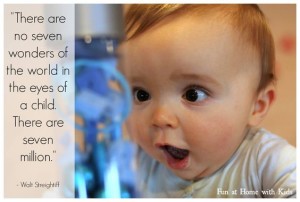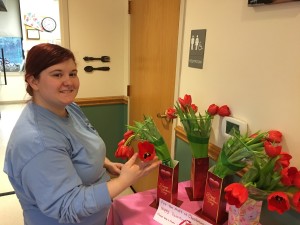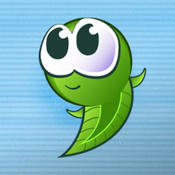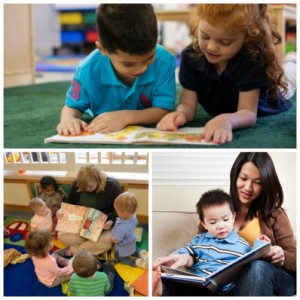From the Principal’s Desk:
Reading Aloud with Preschoolers
While connecting experience to language is an important foundation for learning to read, giving children direct contact with books is equally important. In fact, the single most important activity for building the knowledge required for eventual success in reading is reading aloud to children.
When adults read aloud, children quickly learn that a book is a wonderful thing. When an adult happily reads aloud to children and reads stories that delight both the adult and the children, the experience can be magical. Often adults relive the joys of stories that were important in their own childhood and pass those special stories on to the next generation.
The children bask in the warmth and intimacy of sharing a book with a loved adult. Even if children do not fully understand the story or poem being read, they may enjoy simply hearing the tone and cadence of the adult’s voice, and they will naturally learn about the nature of stories and the structure of language.There is more to reading to children than just saying the words. Reading aloud is a social event, a shared activity in which children are encouraged to ask questions and talk about a story. A story may be the jumping off point for great discussions. For example, what would your children say if
you asked, “Why did the hare think he could get away with sleeping on the side of the road?” Pointing out the connections between the story and your children’s own lives is also important.
Comparing Peter Rabbit and Benjamin Bunny of Beatrix Potter fame with the rabbit you saw at the pet store, at the zoo, or in the woods will help your child distinguish between real and make-believe.
It is not so much who reads with children but rather that someone does it regularly and with joy.
Reprinted with permission from the National Network for Child Care – NNCC.
(1993). Reading aloud with preschoolers. In M. Lopes (Ed.) CareGiver News
(April, p.4). Amherst, MA: University of Massachusetts Cooperative
Extension.

Upcoming Events: Spring Picture Day
Wednesday, Mar. 9th – Infants A&B, Beginner A,
All Siblings. (Sibling individual photos will be taken this day).
Thursday, Mar. 10th – Toddler A&B, Beginner B, Intermediate A
(All sibling photos will be taken on Mar.9th)
Friday, Mar.11th –Prek, Prek-2, Intermediate B,
Soccer shots will have there make-up day Friday, March.18th.
Also, we are looking for parent volunteers to help with picture day(s). If you are interested in helping with picture day, please speak with administration.
Thank you!
Inspirational Quotes for parents

Volunteer Spotlight:



We would like to thank Jennifer Cartelli for the beautiful flowers and candy !
The teachers and staff loved it.
We truly appreciated it.
I want to thank each of you for the participation in our recent fundraisers! Participation in our fundraising events is optional for all families. We feel that by offering a wide range of fundraisers, families can pick the ones that work for their family!
Our Yankee Candle fundraiser was one of the most successful we have offered this year and Little Caesar’s was our most successful last year. The companies we work with are nationally recognized brands, are financially reputable and have offered a good return for our time and efforts.
With the sales from our fundraisers we are able to purchase extra supplies for the classroom. Recently we purchased new gliders for the infant room, as well as additional chairs and cots for our classrooms.
If you have ideas for any local fundraisers, please let me know and I will research the idea to see if we can offer it.
Thank you for supporting our school!

Dear Families,
We are still continuing to pilot our new Tadpoles system. We have received positive feedback from parents and would love to continue to hear any feedback.
Thank you for your continued support and we are grateful for the opportunity to pilot this program for our company.
Parent Reminders
-
Please be sure to wash your child’s hands upon entering the classroom.
-
If your child has received any new immunizations, please make sure we have an updated record in your child’s file.
-
All outside food must be store bought.
-
Inform the front office if your emergency contact information changes.
-
Please sign your child in and out each day.
-
Label all your child’s belongings.
-
Please put appropriate foot wear on your child for active play.
It is time for our FALL ANCILLARY PROGRAMS





Monday Morning: Daisy Dance is a ballet, tap and a creative movement dance program designed to teach children a life long love of movement and provide a foundation for all dance genres. Please click here for the registration form. You can add dance at the beginning of each month.
Tuesday Morning: Preschool Music Adventure is an original approach that successfully engages active preschoolers in musical activities, in order to enhance their overall development. We are very excited about this new music program. We will have a new music session starting in January 26th .
Wednesday Afternoon: T.O.T (Teams of Tomorrow) is an awesome training program that focuses on basketball handling and dribbling skills. The onsite classes are fun, educational and active. Please click here to access the registration form.
Thursday Morning: Soccer Shots is a popular non-competitive youth soccer program. This program teaches confidence, fun, character, teamwork, coordination and imagination. Our next session will begin March 3rd, click here for the registration forms.
Friday Morning: King Tiger Tae Kwon Do is taught according to individual needs and levels of skills. Students begin to establish, and actually achieve, personal goals. Students learn that, by setting realistic goals and applying dedication and hard work, anything is possible. They develop confidence! The virtues of Respect, Concentration, Discipline, and Motivation are the characteristics of a truly confident individual. A new session will start on March 18th, click here for the registration form.
Introducing Your Preschooler to the Fascinating World of Non-Fiction
When you think about children’s books, you might envision princesses in castles, talking animals or a flying magic school bus. Although it’s fun to read these types of stories with your child, it’s important to also introduce him to non-fiction books. You may be surprised to learn that he’s fascinated with exploring real people, places and things!
Non-fiction is not only interesting to children, but it also creates an important foundation for learning. It helps children build new vocabulary, develop critical thinking skills, fuel their curiosity and gain a better understanding about the world around them.
Below are ways we integrate non-fiction in the classroom, as well as activities you can try at home.
INFANTS:
In the classroom: Infants love to look at faces, so our teachers choose non-fiction books that include photographs of people, such as Global Babies by Global Fund for Children. Afterward, they show the baby a photo of his own family and talk about the people in the photo. For example, “Look, Ben. Here’s your mom. Who’s she holding? That’s you.”
At home: Read multi-sensory picture books with your child. Choose non-fiction books with different textures and bright colors to help stimulate his growing sensory awareness.
Recommended reading: Families by Rena D. Grossman, Bathtime (Baby Touch & Feel) by DK Publishing
TODDLERS (ages 1-2):
In the classroom: Toddlers learn the names of different animals and vehicles and the sounds they make. While singing songs with students, our teachers ask, “What does a pig say?” or “What sound does a fire truck make?”
At home: Point out photographs of familiar animals and vehicles in magazines or books. Ask your child to mimic the noise that each item makes. This can also be done in the car as you’re driving around your neighborhood.
Recommended reading: Baby Animals by National Geographic Kids, Noisy Trucks by Tiger Tales
BEGINNERS (ages 2-3):
In the classroom: Teachers and students read non-fiction books by going on picture walks. A picture walk motivates children to rely on pictorial clues to decipher the story’s plot and make predictions. Before reading the story, they flip through the book, and the child is encouraged to make predictions about the characters and plot. The teacher then reads the book aloud to the student. When finished, the teacher asks questions to start a conversation about the text.
At home: Visit a library with your child, and let him choose a book. Take a picture walk through the book with him. When you’re finished, ask the librarian to recommend a non-fiction book about the same topic. For example, if you read Clifford the Big Red Dog, your child might also be interested in Puppies, Puppies, Puppies, a non-fiction book by Susan Meyers.
Recommended reading: My First Baseball Book by Sterling Children’s, Everything Spring by Jill Esbaum
INTERMEDIATES (ages 3-4):
In the classroom: Our Intermediate teachers combine non-fiction reading with dramatic play. After reading a book about farm life, children create their own farm in the dramatic play center and pretend to be farmers. Children gain a better understanding of the book, practice problem solving skills, and use new vocabulary.
At home: Select a book with large photographs or illustrations. Flip through the book, and let your child stop on pages that interest him. Don’t worry about reading every page. Ask him to tell you what is going on in the pictures, and encourage him to make comparisons to experiences he’s had in real life. For example, if you pick a book about weather, you might ask, “Where do we go in the summertime when it’s hot?” or “Why do we use an umbrella in the springtime?”
Recommended reading: Watching the Seasons by Edana Eckart, Wings by Melanie Mitchell
PRE-K/PRE-K2 (ages 4-5):
In the classroom: Our older preschoolers read a non-fiction book paired with a fiction book, and compare and contrast the two stories. After reading Stella Luna and Bat Loves the Night, the teacher might ask, “In Stella Luna, the bat slept upright. Is that how a real bat sleeps?” Students may also create a Venn diagram that shows similarities and differences in the two books.
At home: Read various forms of non-fiction with your child, including books, brochures and flyers. Challenge him to find sight words in the text. Afterward, ask him to write in his journal what he would like to learn about next. Use that information when choosing another piece of non-fiction.
Recommended reading: Diary of a Worm by Doreen Cronin (fiction), Wonderful Worms by Linda Glaser (non-fiction)
By introducing children to both fiction and non-fiction texts in the preschool years, they become comfortable with a wide range of subjects and acquire the skills needed to comprehend important information in kindergarten and beyond. They are better able to tap into their interests and enjoy learning about real world people, places and things.
– Lauren Starnes, PhD – Director of Early Childhood Education

March Newsletter
From the Principal’s Desk:
Reading Aloud with Preschoolers
While connecting experience to language is an important foundation for learning to read, giving children direct contact with books is equally important. In fact, the single most important activity for building the knowledge required for eventual success in reading is reading aloud to children.
When adults read aloud, children quickly learn that a book is a wonderful thing. When an adult happily reads aloud to children and reads stories that delight both the adult and the children, the experience can be magical. Often adults relive the joys of stories that were important in their own childhood and pass those special stories on to the next generation.
The children bask in the warmth and intimacy of sharing a book with a loved adult. Even if children do not fully understand the story or poem being read, they may enjoy simply hearing the tone and cadence of the adult’s voice, and they will naturally learn about the nature of stories and the structure of language.There is more to reading to children than just saying the words. Reading aloud is a social event, a shared activity in which children are encouraged to ask questions and talk about a story. A story may be the jumping off point for great discussions. For example, what would your children say if
you asked, “Why did the hare think he could get away with sleeping on the side of the road?” Pointing out the connections between the story and your children’s own lives is also important.
Comparing Peter Rabbit and Benjamin Bunny of Beatrix Potter fame with the rabbit you saw at the pet store, at the zoo, or in the woods will help your child distinguish between real and make-believe.
It is not so much who reads with children but rather that someone does it regularly and with joy.
Reprinted with permission from the National Network for Child Care – NNCC.
(1993). Reading aloud with preschoolers. In M. Lopes (Ed.) CareGiver News
(April, p.4). Amherst, MA: University of Massachusetts Cooperative
Extension.
Upcoming Events: Spring Picture Day
Wednesday, Mar. 9th – Infants A&B, Beginner A,
All Siblings. (Sibling individual photos will be taken this day).
Thursday, Mar. 10th – Toddler A&B, Beginner B, Intermediate A
(All sibling photos will be taken on Mar.9th)
Friday, Mar.11th –Prek, Prek-2, Intermediate B,
Soccer shots will have there make-up day Friday, March.18th.
Also, we are looking for parent volunteers to help with picture day(s). If you are interested in helping with picture day, please speak with administration.
Thank you!
Inspirational Quotes for parents
Volunteer Spotlight:
We would like to thank Jennifer Cartelli for the beautiful flowers and candy !
The teachers and staff loved it.
We truly appreciated it.
I want to thank each of you for the participation in our recent fundraisers! Participation in our fundraising events is optional for all families. We feel that by offering a wide range of fundraisers, families can pick the ones that work for their family!
Our Yankee Candle fundraiser was one of the most successful we have offered this year and Little Caesar’s was our most successful last year. The companies we work with are nationally recognized brands, are financially reputable and have offered a good return for our time and efforts.
With the sales from our fundraisers we are able to purchase extra supplies for the classroom. Recently we purchased new gliders for the infant room, as well as additional chairs and cots for our classrooms.
If you have ideas for any local fundraisers, please let me know and I will research the idea to see if we can offer it.
Thank you for supporting our school!
Dear Families,
We are still continuing to pilot our new Tadpoles system. We have received positive feedback from parents and would love to continue to hear any feedback.
Thank you for your continued support and we are grateful for the opportunity to pilot this program for our company.
Parent Reminders
It is time for our FALL ANCILLARY PROGRAMS
Monday Morning: Daisy Dance is a ballet, tap and a creative movement dance program designed to teach children a life long love of movement and provide a foundation for all dance genres. Please click here for the registration form. You can add dance at the beginning of each month.
Tuesday Morning: Preschool Music Adventure is an original approach that successfully engages active preschoolers in musical activities, in order to enhance their overall development. We are very excited about this new music program. We will have a new music session starting in January 26th .
Wednesday Afternoon: T.O.T (Teams of Tomorrow) is an awesome training program that focuses on basketball handling and dribbling skills. The onsite classes are fun, educational and active. Please click here to access the registration form.
Thursday Morning: Soccer Shots is a popular non-competitive youth soccer program. This program teaches confidence, fun, character, teamwork, coordination and imagination. Our next session will begin March 3rd, click here for the registration forms.
Friday Morning: King Tiger Tae Kwon Do is taught according to individual needs and levels of skills. Students begin to establish, and actually achieve, personal goals. Students learn that, by setting realistic goals and applying dedication and hard work, anything is possible. They develop confidence! The virtues of Respect, Concentration, Discipline, and Motivation are the characteristics of a truly confident individual. A new session will start on March 18th, click here for the registration form.
Introducing Your Preschooler to the Fascinating World of Non-Fiction
When you think about children’s books, you might envision princesses in castles, talking animals or a flying magic school bus. Although it’s fun to read these types of stories with your child, it’s important to also introduce him to non-fiction books. You may be surprised to learn that he’s fascinated with exploring real people, places and things!
Non-fiction is not only interesting to children, but it also creates an important foundation for learning. It helps children build new vocabulary, develop critical thinking skills, fuel their curiosity and gain a better understanding about the world around them.
Below are ways we integrate non-fiction in the classroom, as well as activities you can try at home.
INFANTS:
In the classroom: Infants love to look at faces, so our teachers choose non-fiction books that include photographs of people, such as Global Babies by Global Fund for Children. Afterward, they show the baby a photo of his own family and talk about the people in the photo. For example, “Look, Ben. Here’s your mom. Who’s she holding? That’s you.”
At home: Read multi-sensory picture books with your child. Choose non-fiction books with different textures and bright colors to help stimulate his growing sensory awareness.
Recommended reading: Families by Rena D. Grossman, Bathtime (Baby Touch & Feel) by DK Publishing
TODDLERS (ages 1-2):
In the classroom: Toddlers learn the names of different animals and vehicles and the sounds they make. While singing songs with students, our teachers ask, “What does a pig say?” or “What sound does a fire truck make?”
At home: Point out photographs of familiar animals and vehicles in magazines or books. Ask your child to mimic the noise that each item makes. This can also be done in the car as you’re driving around your neighborhood.
Recommended reading: Baby Animals by National Geographic Kids, Noisy Trucks by Tiger Tales
BEGINNERS (ages 2-3):
In the classroom: Teachers and students read non-fiction books by going on picture walks. A picture walk motivates children to rely on pictorial clues to decipher the story’s plot and make predictions. Before reading the story, they flip through the book, and the child is encouraged to make predictions about the characters and plot. The teacher then reads the book aloud to the student. When finished, the teacher asks questions to start a conversation about the text.
At home: Visit a library with your child, and let him choose a book. Take a picture walk through the book with him. When you’re finished, ask the librarian to recommend a non-fiction book about the same topic. For example, if you read Clifford the Big Red Dog, your child might also be interested in Puppies, Puppies, Puppies, a non-fiction book by Susan Meyers.
Recommended reading: My First Baseball Book by Sterling Children’s, Everything Spring by Jill Esbaum
INTERMEDIATES (ages 3-4):
In the classroom: Our Intermediate teachers combine non-fiction reading with dramatic play. After reading a book about farm life, children create their own farm in the dramatic play center and pretend to be farmers. Children gain a better understanding of the book, practice problem solving skills, and use new vocabulary.
At home: Select a book with large photographs or illustrations. Flip through the book, and let your child stop on pages that interest him. Don’t worry about reading every page. Ask him to tell you what is going on in the pictures, and encourage him to make comparisons to experiences he’s had in real life. For example, if you pick a book about weather, you might ask, “Where do we go in the summertime when it’s hot?” or “Why do we use an umbrella in the springtime?”
Recommended reading: Watching the Seasons by Edana Eckart, Wings by Melanie Mitchell
PRE-K/PRE-K2 (ages 4-5):
In the classroom: Our older preschoolers read a non-fiction book paired with a fiction book, and compare and contrast the two stories. After reading Stella Luna and Bat Loves the Night, the teacher might ask, “In Stella Luna, the bat slept upright. Is that how a real bat sleeps?” Students may also create a Venn diagram that shows similarities and differences in the two books.
At home: Read various forms of non-fiction with your child, including books, brochures and flyers. Challenge him to find sight words in the text. Afterward, ask him to write in his journal what he would like to learn about next. Use that information when choosing another piece of non-fiction.
Recommended reading: Diary of a Worm by Doreen Cronin (fiction), Wonderful Worms by Linda Glaser (non-fiction)
By introducing children to both fiction and non-fiction texts in the preschool years, they become comfortable with a wide range of subjects and acquire the skills needed to comprehend important information in kindergarten and beyond. They are better able to tap into their interests and enjoy learning about real world people, places and things.
– Lauren Starnes, PhD – Director of Early Childhood Education